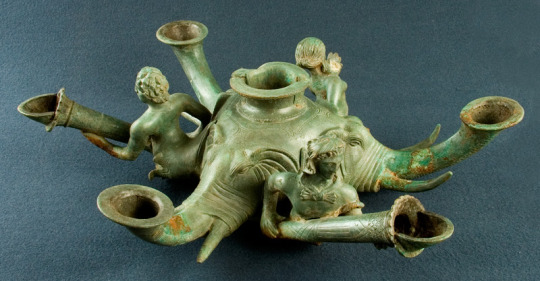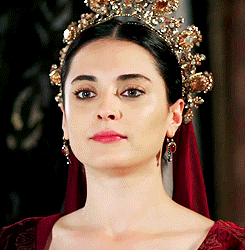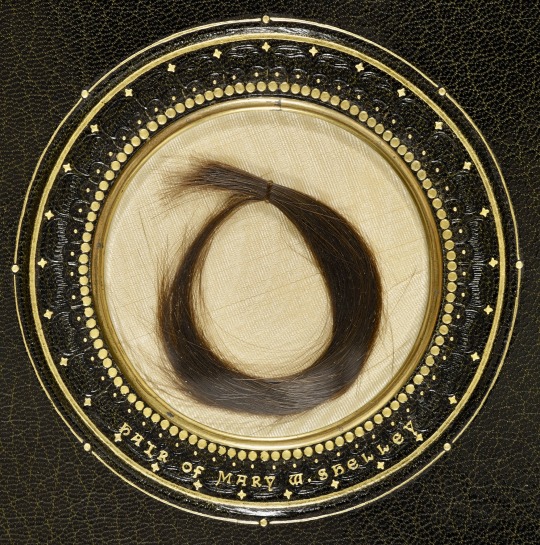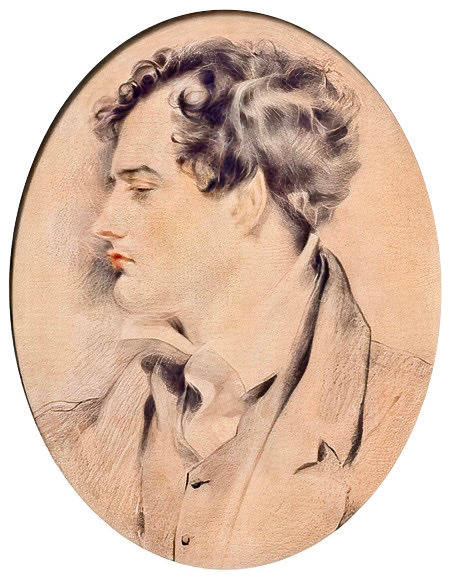#Georgian history
Text





Beckside House in Lancashire, England
#british architecture#british history#georgian history#georgian architecture#18th century#1750s#1760s#georgian england
607 notes
·
View notes
Text

Everyone knows about Lincoln and Garfield and McKinley and Kennedy, the quartet of America Presidents who fell victim to assassination. Even the most casual observers of Presidential history can probably name the four Presidents who were murdered while in office, and many even know the names of the four assassins responsible for their deaths: Booth, Guiteau, Czolgosz, and Oswald.
There have also been quite a few (in)famous unsuccessful assassination attempts, where Presidents barely escaped with their lives, that many Americans are familiar with, including (but not limited to):
•Richard Lawrence's miraculously unlucky double misfire on the steps of the U.S. Capitol in 1835 which left Andrew Jackson unharmed but resulted in Lawrence -- who would be found not guilty by reason of insanity -- getting viciously pummeled by the cane-wielding President Jackson until Davy Crockett intervened to save the would-be assassin from the 67-year-old President.
•The shooting of former President Theodore Roosevelt in Milwaukee as he sought another term in the White House during the 1912 Presidential election. Despite being shot in the chest, Roosevelt decided to go ahead and deliver his campaign speech before being taken to the hospital where doctors discovered that the bullet lodged inside of TR had first passed through a case for his eyeglasses and the thick pages of his speech in his jacket's pocket, lessening the damage from the gunshot.
•The attempted assassination of President-elect Franklin D. Roosevelt in Miami in February 1933, just seventeen days in before FDR's Inauguration, which wounded four people and killed Chicago Mayor Anton Cermak.
•The ill-fated 1950 attempt by Puerto Rican nationalists to storm Blair House (the temporary Presidential residence during the renovation of the White House) and kill President Harry S. Truman as he was napping. Truman was not hurt, but a White House Police Officer and one of the two assassins were killed during the wild shootout.
•President Gerald Ford's trouble with two California women who separately tried to kill him in Sacramento and then San Francisco just two weeks apart in September 1975.
•The shocking shooting of President Ronald Reagan in broad daylight from just a few yards away as he exited the Washington Hilton following a speech in March 1981, which left four people wounded and very nearly killed the 70-year-old Reagan just two months into his Presidency.
But what is amazing is that, in this age of instant information and the constant regurgitation of media coverage via the 24-hour news cycle, very few Americans know that there is a man sitting in prison in the former Soviet Republic of Georgia for attempting to assassinate President George W. Bush. What even less Americans realize is how close Vladimir Arutyunian actually came to accomplishing his task.
On May 10, 2005, President Bush spoke to a large crowd at an outdoor rally in Tbilisi, Georgia. In one of the photos at the top of this post, Bush is seen speaking from the stage in Tbilisi. The other photo is of Arutyunian holding a plaid handkerchief close to his chest. Wrapped in that handkerchief was a live hand grenade.
As President Bush spoke, nearby sat his wife, Laura, Georgian President Mikheil Saakashvili, and the Dutch-born First Lady of Georgia, Sandra Roelofs. They had no idea that, during the speech, Arutyunian tossed his handkerchief-wrapped grenade towards the stage. The grenade landed just 61 feet away from President Bush, well within range of causing serious injury, if not death.
Of course, the grenade did not explode. At first, it was thought to be a dud, but upon closer inspection it was discovered that the only reason the grenade didn't explode was because Arutyunian's handkerchief -- used to conceal the explosive as he stood in the crowd -- was wrapped too tightly around the grenade, preventing the firing pin from deploying. A Georgian security official noticed the grenade, grabbed it quickly and disposed of it as Arutyunian disappeared into the massive crowd and President Bush continued speaking.
After Bush's speech was over and once it was recognized that the President had only narrowly escaped a legitimate attempted assassination, Georgian police worked closely with the United States Secret Service, the FBI, and the U.S. Justice Department to investigate the assassination attempt and find the would-be assassin who seemingly melted into Tbilisi after his brazen, albeit unsuccessful attempt on Bush's life. Using DNA evidence and tips from informants, the Georgian police ultimately tracked down Arutyunian two months later. When they went to arrest Arutyunian, a gunfight broke out and Arutyunian killed Zurab Kvlividze, a top counterterrorism official with Georgia's Interior Ministry. Arutyunian was wounded before finally being captured with the assistance of Georgian Special Forces.
The Georgians tried Arutyunian on the murder of the police officer, as well as the attempted assassinations of President Bush and President Saakshvili. Arutyunian was sentenced to life in prison with no possibility of parole. A federal grand jury in the United States also indicted Arutyunian on the federal charge of the attempted assassination of the President of the United States, which is a felony. The U.S., however, has not attempted nor has any potential plans to extradite the failed assassin from Georgia, and Arutyunian will almost certainly spend the rest of his life in a Georgian prison.
#History#Presidents#Presidential History#Presidential Assassinations#Presidential Assassination Attempts#George W. Bush#President Bush#Bush 43#Bush Administration#Presidency#Georgia#Tbilisi#Mikheil Saakshvili#Vladimir Arutyunian#Attempted Assassination of George W. Bush#Presidential Assassins#Assassination Attempts#Assassins#Unsuccessful Assassination Attempts#Politics#Georgian History#European History#Assassinations#Failed Assassination Attempts#Richard Lawrence#Andrew Jackson#President Jackson#Theodore Roosevelt#John Schrank#Attempted Assassination of Theodore Roosevelt
102 notes
·
View notes
Text

Bronze incense burner, Georgia, 3rd-4th century AD
from The Georgian National Museum
363 notes
·
View notes
Text
i think we should bring back saying lo and hark
#i think it would be fun#and i want to say them more!!!!#history#medieval#medieval history#tudor history#georgian history#tudors#georgians#history memes
157 notes
·
View notes
Text

Aftermath of the russian bombing of Gori, Georgia in 2008. X
#georgia#russia#russian invasion#russian imperialism#2008#russian colonialism#georgian history#gori#2000s#eastern europe
7 notes
·
View notes
Text
Controversial origin of Halime Sultan
For many years the life of Halime Sultan had been a mystery. Not only her place of birth,but even her period in harem and tenure as Valide was unknown. Many thought the mother of Mahmud was killed along with him, some said she survived, but was banished. Even her Muslim name was unknown and was mentioned as fulane sultan for quite a long time, until it was found that she was called Halime sultan.

Like almost everything about her life her origin was mostly a mystery, However today it is accepted that she was from Caucasia, particularly from Abkhazia. However, that doesn't make everyone clear about her ethnicity. Confusion mainly comes because the term "Abkhazian" might include several people: Native Abkhazians, who settled here in ancient times, there were two major tribes in Abkhazia ubykh-abkhazs(genetically closer to Circassians) and Georgian-abkhazs(almost genetically identical to western Georgians). However, the number of people in each tribe varied from time to time, however generally Georgian-abkhazians were more loosely-settled, mainly because during the rise of civilization during iron age,pre-classical and classical antiquity, when Abkhazia was part of first Kingdom of Colchis and then kingdom of Egrisi(lazica), both were kartvelian kingdoms, created after unification of native Kartvelian tribes that lived there, two kingdom covered teritories from todays Abkhazia to some parts of eastern Anatolia. Therefore, Georgian-abkhazs promoted that time. In 697, the kingdom of Egrisi devided, into the de-facto kingdom of Abkhazia from 697-780's and the official kingdom of Abkhazia from early 780's to 1008 that included not only modern Abkhazia,but whole teritories of modern eastern Georgia and parts of Turkey and Russia . The official language of the pre 780's kingdom was Georgian, was ruled by Georgian-abkhaz Nobel families and was almost entirely settled by Georgians. After the 780s it was even more dominated by Georgians and that was time, when on the territories of the modern days republic of Abkhazia along with Georgian-abkhazs and ubykh-abkhazs western Georgians actively started to settle. From 1008 to 1490's it became part of the united kingdom of Georgia. After the 1490s it was invaded by Mongolians and divided into western and eastern parts. That is a period when Circassians slowly started to enter Abkhazian territories. Now back to the topic, up until late sixteenth century Abkhazia was Georgian dominated land, in 1570's same time as ottomans, many Circassian tribes started infiltrating Abkhazia and unlike peaceful natives, started to invade homes of weakened Georgians and as a result during the climax of invasion in 1580-90's mass slave trade burst out and thousands of Georgian-abkhaz and mingrelian girls found themselves in ottoman slave market.
Halime sultan was born around 1568-70, therefore in 1580-90's she could have been anywhere from 10-12 to 20-22 years old, considering Mehmed III received his sanjak in 1583, Halime was likely gifted to him that or next year, at very least she was already favourite in 1586, so she was bought quite before that time. So perhaps she was freshly brought little Georgian in the Ottoman slave market? Everything in this theory fits, her age, statistics, fact that slave markets were flooded by Georgians suggest that when we say that Halime was Abkhaz, it means Georgian-abkhaz, not Ubykh-abkhaz and definitely not non-native Circassians.

#history#historical drama#16th century#magnificent century#magnificent century kosem#mc: kosem#ottoman empire#ottomanladies#historical events#georgia#abkhazia#Georgian history#history of Georgia#halime sultan#ottoman sultanas#sultanate of women#sultanas#circassian#women in politics#historical figures#historyedit
28 notes
·
View notes
Text
look I know that they're father and son but the resemblance is so scary


6 notes
·
View notes
Text
I haven't really touched this blog in a few years, as I'd started it as a history side blog, before just simplyfing back to my main, but I am considering starting to use this again to talk 18th and early 19th century shenanigans, with a focus on architecture.
I'm not sure if anyone will be instested in that much, but if you are still following and see this post let me know!
Architecture! Woodworking! Women in trades!
2 notes
·
View notes
Text
@apricusapollo I feel like Solomon I is one of the most if not the most underappreciated king from Georgian history.
6 notes
·
View notes
Text
I'll be talking about #ATWD kintouri trail now.
It goes like this: you watch the movie And Then We Danced (2019, dir. Levan Akin) for the first time. Maybe even stay for the whole End Credits because of that enchanting beautiful music... And you notice the very last song in the credits is a little different. Sounds really old, unclear and... well generally not so very great. Probably been put in end credits to correspond with those old films of georgian dances the movie begins with, you think. Yeah, fair enough, you think.
Only a tiny detail more: its name is Kinto's Song.

Rings a bell? Like: hey, wait a minute, wasn't the dance that boys were dancing also named kintouri?



So, yeah, you've found the connection, you can be proud of yourself! Now if you decided not to be obsessed with ATWD you feel satisfied enough already and just go on and live your life...
Otherwise - you start to dig.
.
First of all: what does kinto (კინტო) mean?
In old Tblisi (end of XIX century, beginning of XX) Kintos were small merchants, often street fruit sellers, usually carrying their goods on their heads around the city.
Their lifestyle was not like the rest of the georgian society and their traditional clothes were different from other Georgians as well: instead of chokha Kinto was wearing black outfit with baggy pants and a silk shawl hanging from his silver belt - the shawl was to wrap the fruits and vegetables in them to weight.



Sources (read if you're interested): [X], [X], [X]
So, young males and rather poor ones. And without families in the very family-centred georgian society... I don't think it's very surprising to learn that homosexuality wasn't rare among their community (although that's the part you won't find on georgian wikipedia). Even less knowing that when you're on the bottom of the social ladder it's finally where nobody around cares about your life anymore🤷 (I only wonder if it was rather the primal reason for anyone to leave his home and choose a life like this or if it was finding out ones orientation due to mainly interacting with other men. I suppose it might have worked both ways?)
Then we come to the "traditional georgian dance" issue: Kinto's traditional dance is kintouri (or Kintauri, კინტოური) also known as shalakho (შალახო) and it is said to be informal and light natured. I've also read that some of its parts (like hands movements) are of Persian origin. A female Persian dance specifically. [X]
Of course when Kintouri became a part of official Traditional Georgian Ballet - it went through some changes. As was mentioned in And Then We Danced in the last 50 years it became more "masculine", just like adjaruli and other Georgian Dances. So before that I believe it could have been more like this?
youtube
It's Fridon Sulaberidze (ფრიდონ სულაბერიძე) who was born in 1941 but I have no idea what year the film is showing😕 probably 1970's?
Now finally: what is the Kinto's Song? It is the song recorded on X-ray plate almost hundred years ago and found in 2018. Illegal song: song of a man loving two other men. I guess Levan Akin must have found the song quite recently before making And Then We Danced (2019).
Knowing all that historical and cultural context - I can not imagine any better fitting song for the end of the movie about struggling between your tradition and culture and your love to another guy...
That movie is a masterpiece in every little detail!🥰❤❤
.
Of course it's just a beginning - what I wanted to indicate just now is that the song in End Credits is a hint to kintouri being a trail to follow throughout the movie. Furthermore I want to show you how it may lead to see few movie scenes in a little bit different light (like here), so expect me talking more about #ATWD kintouri trail from time to time
#ATWD kintouri trail#and then we danced#და ჩვენ ვიცეკვეთ#atwd#levan akin#and then we danced soundtrack#kinto#kintouri#კინტო#კინტოური#georgian traditional dance#georgian culture#georgian dancer#georgian history#this movie is a masterpiece#a potem tańczyliśmy#ATWD amateur guidebook
19 notes
·
View notes
Text
What I've Been Reading Lately: September 15
What I’ve Been Reading Lately: September 15
Welcome to What I’ve Been Reading Lately, a feature where I’ll be giving short reviews of what I’m currently reading:
(more…)

View On WordPress
#Agatha Christie#Book Series#Books#British mysteries#Candice Carty-Williams#Diverse Reads#Diverse Stories#Fantasy#Fantasy Books#Georgian History#Laura Bates#Laura Steven#Lord Byron#Mysteries#Mystery#Mystery & Thriller#Nonfiction#Sara Barnard#Sourcebooks#Sourcebooks Fire#Supernatural#Tanvi Berwah#UK#UK Books#UK YA#UK YA Books#Witches#YA Novels#YA Series#Young Adult
1 note
·
View note
Text
Drinking Like A Regency Buck - Part 2

Say, you didn’t like port, and actually preferred Scottish whiskey. Then you were in a bind, because during the war with France - and most of the Regency period was one war with France or another - taxes and regulations made trading in Highland whiskey very difficult. Naturally, that did not mean that the trade stopped. And the drinking most certainly did not stop. The solution was obvious: smuggling.
Whiskey-smuggling for the moneyed consumers became so endemic that smugglers started to travel in large paramilitary bands, sometimes disguised as a squad of soldiers or even preceded by pipers. The methods were really quite ingenious, and, if you are interested, I can do a whole post on the tales of Regency whiskey smuggling one day.
Buying from smugglers was not actually some rare and shadowy offense committed in dark alleyways - even Parson Woodforde, a famous diarist who was, well, duh, a clergyman, noted in his journal that he had had a rendez-vous with a smuggler in the evening to replenish his supplies.
0 notes
Text

Gold lion figurine, Georgia, 2nd half of the 3rd millennium BC
from The Georgian National Museum
264 notes
·
View notes
Text
Locks of hair from Percy Shelley, Mary Shelley, and Lord Byron, next to their portraits:






#percy shelley#mary shelley#lord byron#romanticism#dark academia#lock of hair#19th century#victoriana#victorian#georgian#regency#literary history#relics#artefacts#hair#portraits#the geneva squad#the pisa circle
2K notes
·
View notes
Text
I don’t know who needs to hear this today, but:
- arsenic dye was used to make multiple shades of green in the 18th/19th centuries
- green dyes without arsenic were also still in common use
- consumer outcry against arsenic dye started as early as the 1860s, with many manufacturers beginning to phase it out around that time due to customer demand
- arsenic – dyed clothing is not likely to do more to the wearer than cause a skin rash. The majority of deaths from exposure to the dye were caused by other, more concentrated sources, and/or among workers exposed to large quantities of the pigment on a daily basis rather than consumers
- IT IS IMPOSSIBLE TO TELL IF A GREEN ANTIQUE GARMENT IS DYED WITH ARSENIC WITHOUT CHEMICAL TESTING. There is NO telltale quality visible to the naked eye that I am aware of
2K notes
·
View notes
Photo

Robe a l’Anglaise
Dress c.1748; Altered c.1780
Fashion Museum Bath via Twitter
#robe a l'anglaise#fashion history#historical fashion#1740s#1780s#georgian fashion#georgian era#rococo era#baroque era#18th century#brown#floral#flower print#silk#fashion museum bath#popular
3K notes
·
View notes